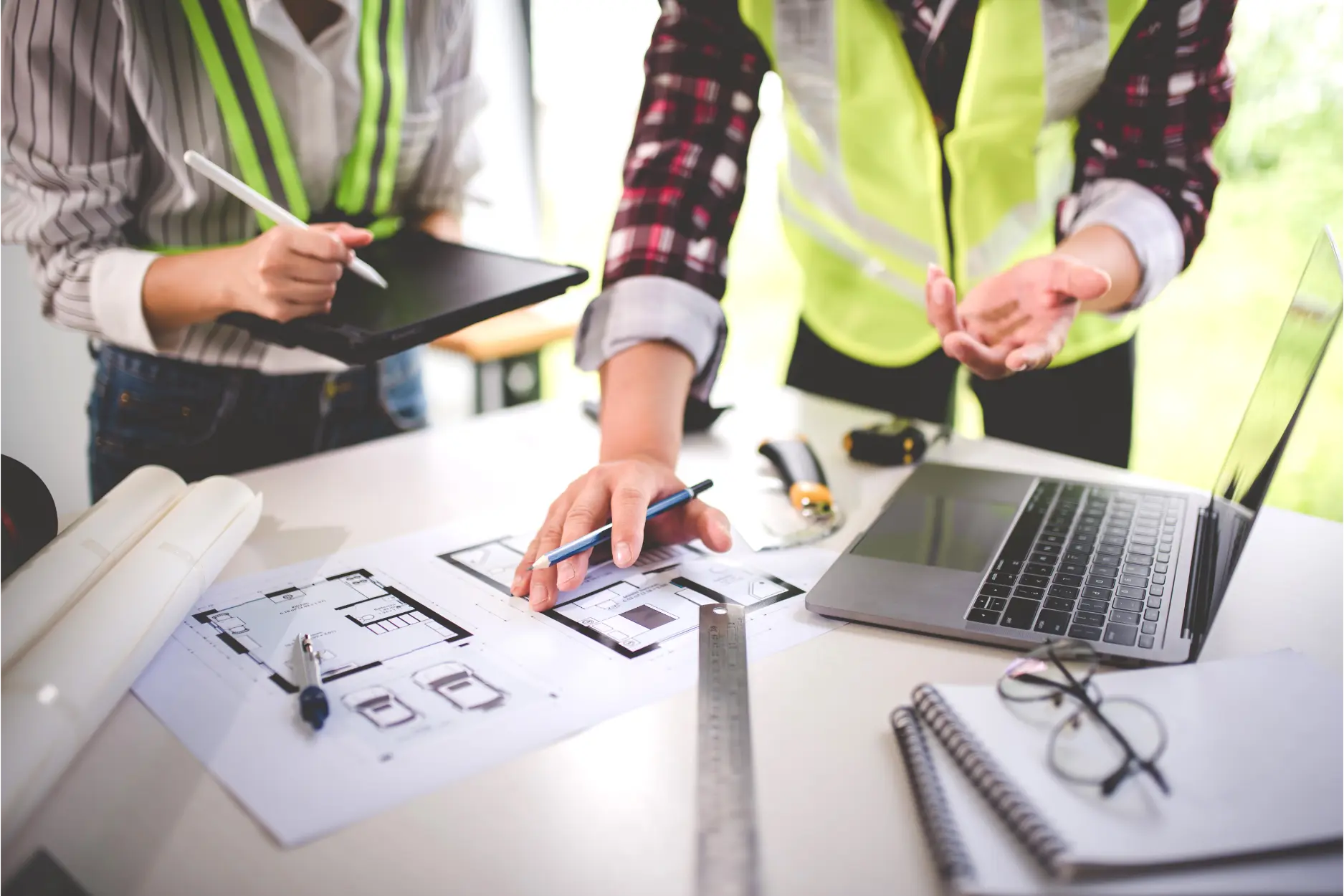
Interior design extends far beyond the conventional realm of precise measurements. While ensuring accurate dimensions remains paramount, interior designers encounter a myriad of challenges that transcend the limitations of traditional measurement techniques. Addressing these multifaceted hurdles is crucial for a seamless and innovative design process.
From the traditional reliance on measurement tape for interior designers to the advent of cutting-edge technologies to scan interiors and 3D scan house interiors, the landscape of interior design has evolved significantly. However, alongside technological advancements, designers grapple with diverse complexities that impact the design journey.
In today's design sphere, the need to integrate innovative tools to scan interiors has arisen, allowing designers to move beyond mere measurements and embrace a holistic approach to design. Interior design measurements form the foundation, but the challenges encompass visualization ambiguities, time-consuming modeling processes, and the quest for real-time, immersive experiences in design presentations.
Amidst this intricate tapestry of challenges, recognizing the significance of addressing these diverse pain points becomes imperative. Designers must navigate through the nuances of traditional methods and contemporary technological solutions to craft seamless design processes that inspire innovation and precision.
In the quest for excellence, interior designers rely on more than just measurement tape; they seek holistic solutions to scan interiors and 3D scan house interiors, and innovative methodologies to achieve design perfection. Embracing this paradigm shift, where traditional meets technological innovation, is the cornerstone for overcoming multifaceted interior design challenges.

In the realm of interior design, the battle against design inconsistencies and visual ambiguity is a persistent challenge. Visual representations, often the backbone of design plans and layouts, harbor ambiguities that can impede accurate design implementation.
Visual ambiguity within design plans presents a significant hurdle for interior designers. The inconsistencies and vagueness encountered in these representations often stem from limitations in traditional visualization techniques. Two-dimensional drawings or basic digital renderings fail to accurately capture a three-dimensional space's intricate nuances. These limitations obscure crucial details, leading to misinterpretations and design discrepancies.
The repercussions of visual ambiguities are far-reaching. Designers, clients, and stakeholders rely on visual representations to comprehend and implement design plans. However, when plagued by inconsistencies and ambiguity, these representations hinder the accurate translation of design intent into reality. Inaccurate interpretations based on vague visuals can lead to misguided design decisions, resulting in suboptimal design execution and compromised end results.
Addressing design inconsistencies and visual ambiguity demands a paradigm shift in design methodologies. Embracing innovative tools to scan interiors emerges as a beacon of hope. These cutting-edge solutions transcend the limitations of traditional visualization methods, offering immersive, three-dimensional representations that vividly portray design concepts with unprecedented accuracy.
The quest to mitigate visual ambiguities drives interior designers toward holistic solutions. By incorporating advanced technologies to scan interiors, designers can elevate visual representations. These tools empower designers to create lifelike, immersive visualizations that bridge the gap between design plans and real-world implementation, ensuring clarity and precision in design communication.

Manual modeling processes have long been intrinsic to interior design workflows, yet their time-intensive nature poses substantial challenges. These traditional methods, reliant on manual craftsmanship, often impede efficiency and contribute significantly to project timeline delays.
Interior design, a meticulous craft, often entails the manual creation of design prototypes, architectural models, and spatial layouts. The intricate detailing and precision demanded by these processes demand substantial time investments. Designers meticulously craft physical or digital models, investing countless hours in each intricate detail, leading to prolonged project cycles.
The inherent time-intensiveness of manual modeling processes acts as a bottleneck, hindering the design workflow's efficiency. These arduous processes limit designers' ability to explore multiple design iterations within constrained time frames. As a result, the iterative design process, crucial for innovation and refining concepts, is significantly curtailed.
In the dynamic landscape of interior design, time is of the essence. However, the protracted nature of manual modeling translates directly into project timeline delays. Designers find themselves grappling with extended timelines, impeding project delivery and potentially affecting client satisfaction.
To counter these challenges, interior designers are increasingly turning to innovative technological solutions. Advanced tools to scan interiors present a paradigm shift in modeling approaches. These cutting-edge technologies streamline the modeling process, offering rapid prototyping and detailed spatial renderings in significantly shorter time frames.
The integration of interior scans expedites the modeling phase, enabling designers to explore diverse design iterations swiftly. This acceleration in the design process promotes rapid ideation, innovation, and refinement of concepts, facilitating timely project deliveries without compromising on design quality.
By leveraging these technological advancements, interior designers can transcend the time constraints imposed by manual modeling, fostering an environment conducive to enhanced creativity, iterative design exploration, and punctual project deliveries.
In the realm of interior design, real-time visualization serves as a critical bridge between conceptualization and implementation. However, the field grapples with limitations in achieving instantaneous, immersive visualization experiences during the design phase, impacting client engagement and design decision-making.
Real-time visualization within interior design often encounters constraints. Traditional methods and tools inadequately translate complex design concepts into dynamic visual representations. This limitation inhibits the instantaneous creation of immersive, three-dimensional visualizations that accurately portray spatial designs.
The absence of comprehensive real-time visualization significantly affects client engagement. Clients struggle to grasp the intricacies of design concepts presented through static or limited visual representations. The inability to showcase designs in an immersive, real-time manner obstructs clients' ability to visualize the final outcomes, potentially leading to misinterpretations and dissatisfaction.
Constrained visualization also exerts a substantial influence on design decision-making processes. Designers, limited by the inability to showcase real-time design modifications or iterations effectively, encounter challenges in presenting various design options. This limitation restricts the scope for on-the-spot alterations or informed decision-making during client interactions.
Recognizing the significance of immersive visualization, interior design is increasingly leaning towards adopting innovative tools and technologies. The integration of advanced visualization software and applications aims to mitigate these limitations, offering dynamic, real-time visualization experiences. These solutions empower designers to present intricate designs in a dynamic and immersive manner, fostering better client understanding.
The adoption of advanced visualization solutions revolutionizes the design decision-making process. Designers harness these tools to offer real-time design modifications and iterations during client interactions, facilitating informed decisions. This agility enables designers to showcase multiple design options effectively, leading to enhanced collaboration and precise decision-making.
In the dynamic landscape of interior design, the seamless integration of diverse design tools and software emerges as a critical aspect of streamlined workflows. However, the industry often grapples with significant challenges in integrating these tools, primarily stemming from incompatible formats, leading to workflow interruptions.
Interior designers navigate a vast array of design tools and software catering to different aspects of the design process. However, the challenge arises when attempting to integrate these disparate tools into a cohesive workflow. Varied file formats, software limitations, and incompatible interfaces hinder the seamless exchange of data and design elements between different tools.
Incompatible formats pose significant hurdles in the integration of design tools. Designers encounter difficulties in transferring design files, models, or data seamlessly across different software platforms. The mismatched file formats often lead to data loss, formatting errors, or distortion of design elements, disrupting the continuity of the design process.
The inability to integrate design tools efficiently leads to frequent workflow interruptions. Designers are compelled to navigate between multiple software interfaces manually, investing additional time in file conversions or rectifying compatibility issues. These interruptions disrupt the creative flow, hamper productivity, and hinder the timely execution of design projects.
Recognizing the pivotal role of integrated workflows, the interior design industry aims to address these integration challenges. Efforts are underway to develop standardized file formats and interoperable software interfaces. Embracing open-source formats and collaborative platforms emerges as a solution to foster compatibility and streamline tool integration.
The advocacy for seamless tool integration aims to enable fluid workflows within interior design processes. Standardized file formats and interoperable software interfaces pave the way for enhanced collaboration and efficient data exchange between different design tools. This transition towards integrated workflows promotes efficiency, reduces errors, and facilitates a more cohesive design process.

Introducing Twinn Capture as a holistic interior design solution catering to multifaceted challenges, its advanced capabilities transcend traditional boundaries, addressing visual inconsistencies, expediting modeling processes, enabling real-time visualization, and ensuring seamless tool integration.
Also Read: Interior Scanning Benefits & Future Uses - BHC (ibhc.com)
Twinn Capture revolutionizes interior design by offering an advanced suite of features that mitigate visual inconsistencies. Leveraging cutting-edge spatial recognition and AI-driven algorithms, Twinn Capture meticulously captures spatial data, eliminating discrepancies in design representations. The precision of LiDAR technology coupled with Spatial Vision AI ensures accurate and vivid interior visualizations, bridging the gap between design plans and reality.
At the core of Twinn Capture lies the capability to streamline the time-consuming manual modeling processes prevalent in interior design. Through its robust spatial scanning functionalities, Twinn Capture expedites the modeling phase. By swiftly converting scans into design-ready 3D models with >99% measurement accuracy, it saves hours on traditional modeling processes, empowering designers with rapid prototyping capabilities.
Twinn Capture redefines the design visualization experience by offering real-time visualization capabilities. Its innovative features enable designers to visualize scans instantly on an iPad, providing a dynamic, immersive, and detailed view of interior spaces. This instantaneous visualization empowers design decision-making, fostering enhanced client engagement, and minimizing the ambiguity often encountered in static design presentations.
Twinn Capture serves as a unifying force in the realm of interior design software. Its compatibility with various design tools and formats resolves integration challenges. By offering export-compatible formats and seamless integration capabilities with other Twinn software solutions like Twinn Create and HQ, Twinn Capture enables a cohesive workflow, minimizing interruptions caused by incompatible interfaces.
Twinn Capture's technical prowess, including LiDAR-powered scanning, Spatial Vision AI, and real-time visualization on iPad, stands as a testament to its role as a comprehensive solution addressing the diverse pain points in interior design. From precision-driven scans to streamlined modeling and integrated workflows, Twinn Capture emerges as a catalyst in elevating interior design processes to unprecedented levels of accuracy, efficiency, and innovation.
Also Read: Mastering Interior Scanning: Unveiling the Best LIDAR Scanner App for iOS (twinn.pro)
Ready to Transform Your Design Process with Twinn Capture?
Experience the future of interior design firsthand! Sign up for a demo today and discover how Twinn Capture revolutionizes scanning, modeling, and design creation.
Unleash your creativity and precision with Twinn Capture's advanced features. Learn more about our innovative interior scanning technology and explore the possibilities it holds for your next design project.
Take the first step toward a seamless design journey. Sign up for a demo now to elevate your interior design experience!
FAQs